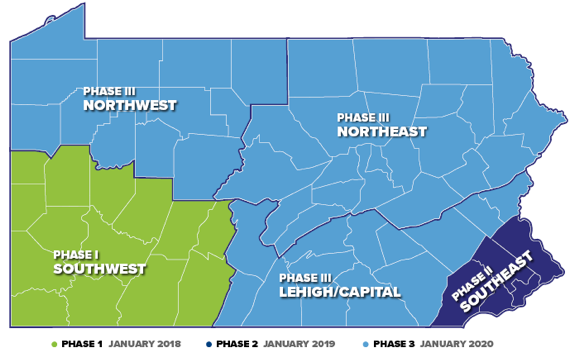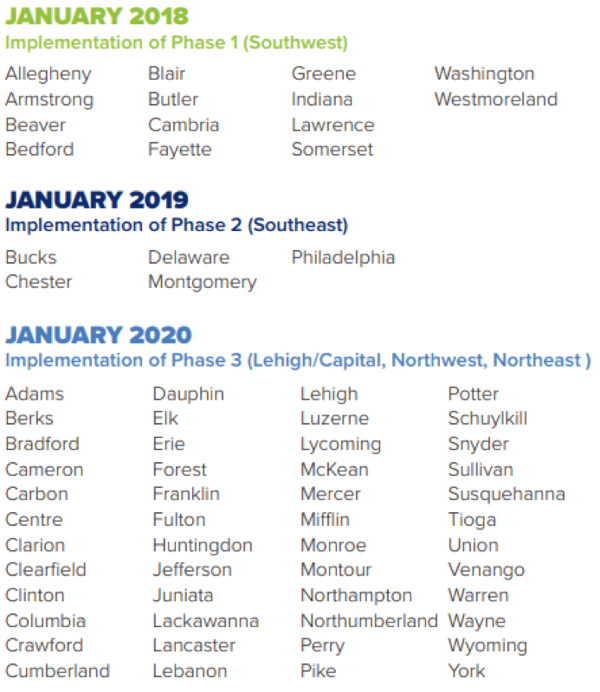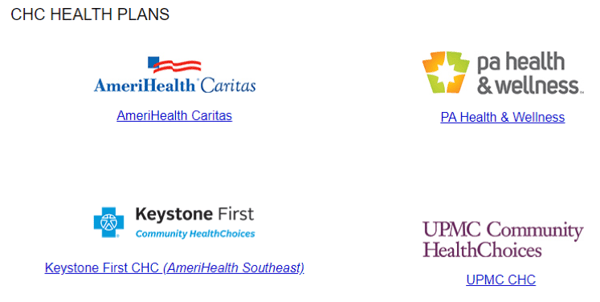If you’re a home care provider in Pennsylvania that participates in Medicaid programs, then HHA Exchange is your gateway to reimbursement. Here are the key things that you need to know:
- Pennsylvania is moving to a new model for managing the Medicaid Home Care waiver programs. This move is being accomplished in three phases, two of which have already gone live:

- The Pittsburgh area went live in January 2018
- The Philadelphia region went live in January 2019
- The rest of the state goes live in January of 2020
- The effected county roll-out list is as follows:

- Pennsylvania has contracted with four Managed Care Organizations (MCOs) to administer the Home Care waiver programs. The program is called Community Health Choices (CHC). Each of your clients will need to sign up with one of the MCOs. These are the MCOs:

- All the MCOs have contracted with a software company called HHA Exchange to provide a gateway into the MCOs. It’s great the MCOs have come together on this because it gives you a single interface into the MCOs.
- HHA Exchange provide a portal and a site for downloading and uploading files The file exchange site is critical because it allows you to get your referrals and to submit your visit records for billing.
- Most agencies refer to HHA Exchange as “The Exchange.”
- You can contact the HHA Exchange PA help team in the following ways:
- Phone: 407.4633
- Email: pasupport@hhaexchange.com or support@hhaexchange.com
- A big aspect of this change in PA is that agencies need to use Electronic Visit Verification (EVV). This means that you need to prove electronically that your visits were performed. The primary ways that this verification is accomplished are via voice telephony (having your caregiver dial in from the client’s home phone and verifying that they are there via caller ID) or via a mobile app (where the app compares the GPS location of the clock-in and clock out with the client’s home location). Key elements that you need to capture will EVV are as follows:
- Caregiver who performed the visit
- Arrival time
- Departure time
- Location (via telephony or GPS as described above)
- Service performed (visit type)
- In comparison to submitting claims (which is how it works with PA Promise) you submit the EVV information to the Exchange and they submit claim information after they validate what you’ve submitted.
- You’ll have to get registered with the Exchange and show that you can submit a visit file that follows their format specification. This is something that your EVV software vendor should take care of for you.
- Once registered, you’ll be able to get information out of The Exchange (client information, MCO information, authorizations) and submit information to the Exchange (most importantly completed visit information). Another type of information that comes out of the exchange are response files (where The Exchange tells you if your submitted visits were accepted or if there were exceptions).
- Some of the tricky parts of working with The Exchange are as follows:
- Your clients have the right to change MCOs at any time, and you need to keep up with these changes because your visit records need to reference the MCO
- When you have multiple visits in the same day it’s best to submit all of visits to the Exchange at the same time. If you don’t the payments get delayed because they need to make sure that you didn’t submit for the same visit twice.
- File Format Check: Before processing any information that you submit, HHA Exchange will verify the format of the file. As an example, all items in the file have to be surrounded by double quotes and separated by commas, and dates need to be in the format of YYYY-MM-DD with times in “military time” (24 hour clock). If there’s a problem with your format, the file will not be processed and will stay in your “inbox”
- Some programs will continue to work with PA Promise. The key cases are 1) if you have some counties that have moved to The Exchange and others that haven’t, you’ll need to submit those counties to Promise, and 2) Some programs (like the ACT 150 waiver) will stay with Promise
Ankota provides software to improve the delivery of care outside the hospital, focusing on efficiency and care coordination. Ankota's primary focus is on Care Transitions for Readmission avoidance and on management of Private Duty non-medical home care. To learn more, please visit www.ankota.com or contact us.




Your Comments :